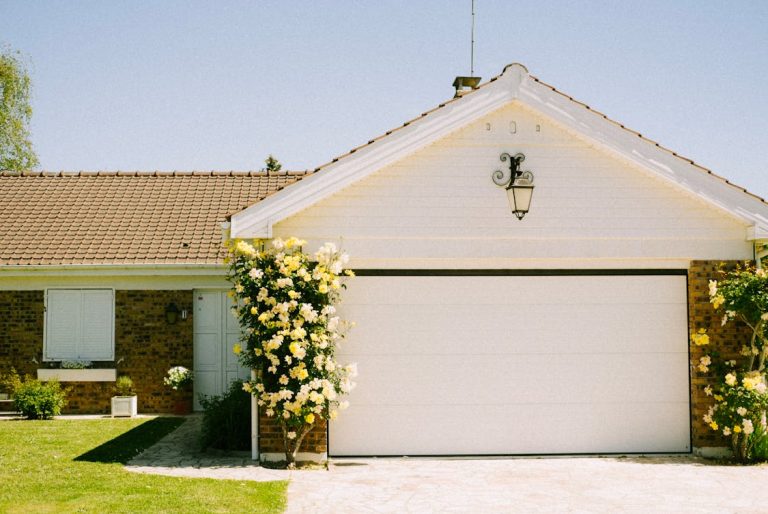Ranch-style homes are making a notable comeback in the housing market, capturing the hearts of many, especially those over 55. These single-level houses are not only a nod to mid-century design but also cater to buyers looking for spacious outdoor living spaces. With their vast lots and patios that seamlessly connect the inside to the …
Why Ranch Homes Are Hot Again: The Resurgence of a Classic Style

Ranch-style homes are making a notable comeback in the housing market, capturing the hearts of many, especially those over 55. These single-level houses are not only a nod to mid-century design but also cater to buyers looking for spacious outdoor living spaces.
With their vast lots and patios that seamlessly connect the inside to the outside, ranch homes are a top pick for those who enjoy the blend of indoor comfort with an appreciation for the outdoors.
Each type of architectural design has its unique charm, from the symmetrical elegance of colonial houses to the handcrafted details of Craftsman homes, and the homely allure of farmhouses with their inviting porches. However, ranch homes stand out for their simplicity of living on one level and are currently leading the preferences among homebuyers, as indicated by recent real estate surveys.
The appeal of ranch homes lies in their accessibility and functional design, but the suitability of these homes varies based on personal lifestyle and needs.
What Is a Ranch Home?
Ranch-style homes emerged as a dominant architectural trend in the mid-20th century, particularly in the 1950s and 1960s. Characterized by their single-level living spaces, these homes are known for sprawling layouts that occupy more land compared to vertical-style houses.
Predominantly found in regions like the West and Midwest where open space is plentiful, ranch homes have also been constructed in other areas. However, they are less common in places like the Northeast, where limited land makes them less feasible.
Unlike earlier architectural styles that designated separate spaces for specific functions, modern ranch homes often embrace a more open interior design. Traditionally, they feature simple exterior designs with ample outdoor space, including sizeable backyards and inviting porches or patios.
Typically, ranch homes are designed with privacy in mind, offering private outdoor areas that are tucked away from the street, contrasting with older styles like Victorian homes that often featured porches as a public venue facing the street.
Why Are Ranch Homes Popular?
Ease of Accessibility: Without the need to navigate stairs, ranch homes provide the perfect layout for those with mobility concerns or anyone who prefers single-level living. Its straightforward design ensures a smooth flow between rooms.
Appeal Across Generations: Not only do these homes attract mature individuals looking to stay in their homes as they age, but younger homebuyers with an affinity for outdoor living are also drawn to these structures. They typically come with spacious lots and an open transition between the indoor and outdoor spaces.
Outdoor Connection: Many ranch homes are designed with ample access to outside areas, often featuring large patios where the line between interior and exterior living spaces is fluid and encourages enjoyment of the property’s outdoor potential.
Maintenance Benefits: The single-story nature of ranch homes simplifies many home maintenance tasks. Whether it’s cleaning gutters or attending to the roof, the work is generally more accessible and, consequently, can be less expensive.
The Drawbacks of Ranch Homes
Though ranch homes offer plenty of room and a sprawling layout, they often come with a higher price tag when it comes to construction. Building a home of this type typically involves heftier expenses due to the need for larger foundational work and roofing compared to multi-story houses.
- Construction Costs: More expensive to build on a per square foot basis.
- Foundation and Roofing: Larger foundation and roof required than two-story homes.
As systems like plumbing and electrical need to cover a greater area, initial installation fees can be substantial. Additionally, heating and cooling such spaces can lead to increased utility bills over time.
- System Installations: High initial costs for plumbing and electrical setups.
- Utilities: Higher ongoing heating and cooling expenses.
Ranch homes also necessitate larger plots of land, which might be hard to come by or more expensive in areas where land is at a premium.
- Land Requirements: More land needed for the single-level spread.
- Land Scarcity: Higher land prices elevate overall costs, making ranch homes less accessible in certain markets.
The Ranch Home’s Evolution
Ranch-style dwellings have undergone a transformation from their original segmented designs. These days, they prioritize an open-concept layout, merging the living, dining, and kitchen spaces into one expansive area.
Gone are the days of isolated rooms, with main spaces flowing seamlessly into one another, often including a flexible space for home offices.
Key Changes:
- Open Floor Plans: Integrated living spaces replace separated rooms.
- Spacious Primary Suites: Larger bedroom areas with ample closet space.
- Accessibility Features: Wider hallways for wheelchairs and walkers reflect a sensitivity to the needs of maturing homeowners.
Mortgage Lender Evaluation
When considering different mortgage providers, it’s essential for prospective homebuyers to compare various aspects to find a suitable match for their financial needs. Below are some key factors to look at:
Interest Rates: Buyers should examine the offered rates to determine affordability over the loan’s term.
Loan Types: Conventional, FHA, VA, and USDA loans cater to varied buyer needs and qualifications.
Minimum Credit Requirements: Lenders have specific credit score thresholds for loan approval.
Down Payment: The upfront payment varies, with some loans allowing as low as 3% down.
Customer Service: A lender’s reputation for client support is important for a smooth process.
Given these criteria, here’s a compact overview:
| Lender | Credit Score | Down Payment | Rate Type |
|---|---|---|---|
| Lender A | 620+ | 3% | Fixed/ARM |
| Lender B | 740+ | 3.5% | Fixed |
| Lender C | 620+ | None | VA/USDA |
Homebuyers can apply and get a low mortgage rate promptly. Mortgage rates could decline in 2024, following potential Federal Reserve rate cuts. It is advisable to track updated ratings and reviews to ensure the lender’s trustworthiness.









